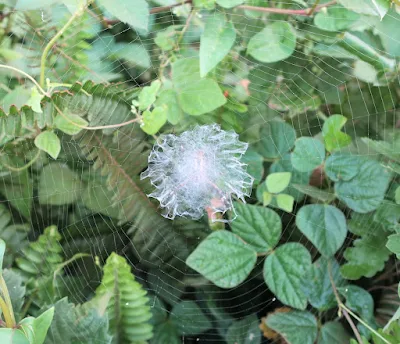I was so lucky! I found these mushrooms during a morning walk. What am I going to make for dinner? Mushroom omelet, pasta or miso soup😁?
I was thinking or hoping something like that when finding these mushrooms, which were 10 cm in diameter, appearing out of the blue after the rain. Of course, I didn't pick, just taking pictures of them. I thought that they might be edible, but had no courage(?) to try them.
And I was right. They're chlorophyllum molybdites or more commonly known as false parasol or vomiter, which are poisonous, causing literally vomiting and diarrhea! Wow😱 One good thing about these mushrooms is that just touching them causes no harm. Phew! I touched them while taking these photos....
















































